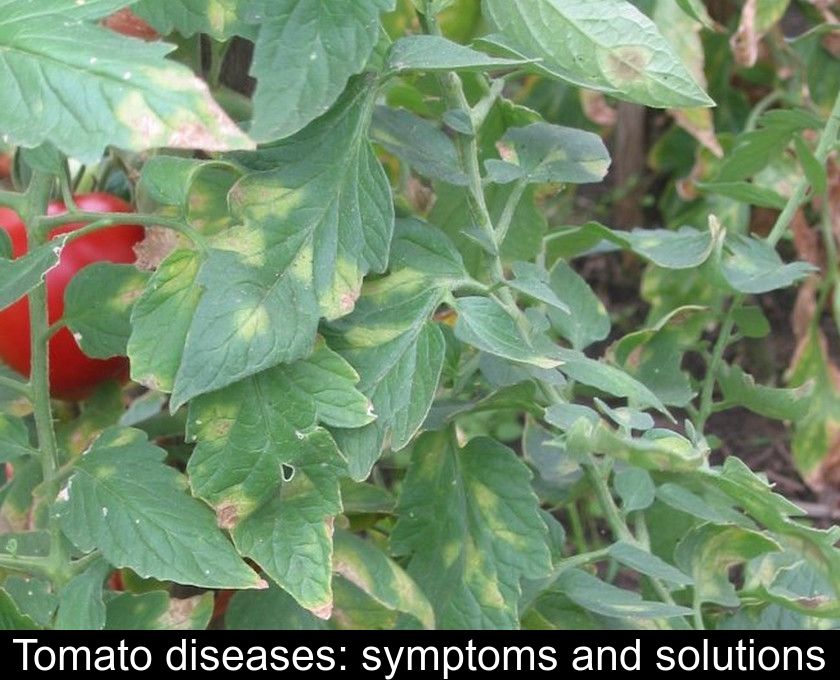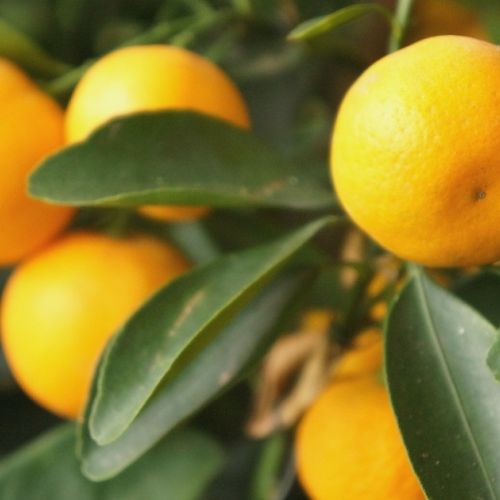Tomato Diseases: Symptoms And Solutions
Tomatoes are one of the most popular summer fruits for gardeners, including beginners. But this plant of the Solanaceae family has the disadvantage of being prone to various diseases. We propose you to discover the different tomato diseases, how to recognize them, prevent them and treat them.
1- Tomato blight
A fungal disease caused by a fungus, downy mildew appears when summers are rainy.
The first signs of the disease are dark green spots that appear on the edges of the leaves. They then quickly turn gray and then brown.
Later, other parts of the plant turn brown: stems and fruit become stained brown. In the final stage of the disease, your tomato plants look dried out and your entire crop may be ruined.
Although there is no miracle cure for this most well-known and dreaded disease among tomato growers, it is possible to prevent the onset of late blight with a few simple steps.
If you live in a humid region, it is essential to grow your tomatoes under cover, for example under a tunnel, a well-ventilated greenhouse or a transparent roof.
Also, you can limit the moisture on your tomato plants by spacing them apart. If you have enough room in your vegetable garden, note that a distance of one meter between each plant is ideally recommended. Otherwise, leave a distance of at least 50 cm between each plant.
Other blight prevention actions include:
- do not wet the leaves when watering
- watering tomatoes preferably in the morning (when watering in the evening, the soil may stay wet overnight)
- install a straw mulch at the base of your plants so that the leaves stay dry
- regularly inspect the foliage of your tomatoes to detect any sign of infection at the beginning of the disease.
If you notice that your tomatoes are beginning to be affected by this disease, the only action to prevent contamination of the rest of your crop is to cut out all affected parts, or even remove a diseased plant completely.
Finally, note that fruits slightly affected by mildew are still edible: simply remove the affected parts with the tip of a knife.
2- Powdery mildew
A disease well known to winemakers and gardeners, Oidium also affects tomatoes.
This disease caused by a fungus appears mostly in spring or late summer, when the atmosphere is humid and the nights are cool.
Among tomato diseases, this one can be recognized by the white, mealy-looking powder that appears on the leaves and stems. The young leaves eventually become deformed and dry and the plants wilt.
At the first symptoms, powdery mildew can be treated with sulfur sprays. But you should not wait for the disease to spread, or this treatment will become ineffective.
Sulfur is sold as a powder to be diluted with water, paying close attention to the doses indicated on the package. Also note that it is better to avoid treating your tomato plants in hot weather.
3- Grey rot
Grey rot, also known as botrytis, is another disease caused by a microscopic fungus.Like downy mildew and powdery mildew, it is one of the tomato diseases that develop in wet weather.
The first symptoms of the disease are large brownish spots on the leaves and stems. These then become covered with a characteristic gray or beige mold, hence the name 'gray mold.
This disease can cause varying degrees of damage to your tomato plants. If conditions are favorable, especially in a poorly ventilated greenhouse, gray mold can destroy your entire crop.
To prevent this disease, it is important to ensure that your plants are sufficiently spaced and that your greenhouse is well ventilated.
When the disease appears, it is possible to treat your tomatoes with Bordeaux mixture, a product authorized in organic farming.
4- Alternaria
Among tomato diseases, alternaria can be recognized by small yellow spots that quickly turn black-brown. These round, sharply outlined spots are about 5 mm in diameter and gradually spread in a concentric fashion.
The disease, also caused by a fungus, attacks older leaves first and may affect fruit.
But its main drawback is that it favors the appearance of other fungi that take advantage of the lesions on the diseased plant to grow.
As soon as the first symptoms appear, you can perform spraying with Bordeaux mixture. When the disease takes hold, the only solution is to cut and burn all affected parts to save part of your crop.
Finally, note that you should not collect seeds from infected tomatoes, at the risk of spreading the disease.
5- The black ass
Among tomato diseases, black ass is unique in that it is not linked to a pathogen.
This disease is usually caused by irregular watering, that is, alternating phases of Drought and very heavy watering.
It is characterized by a necrotic black spot that appears on the side opposite the stalk.
To avoid this problem, it is recommended to pack the soil in order to keep some moisture at the foot of the plant and to water regularly.









